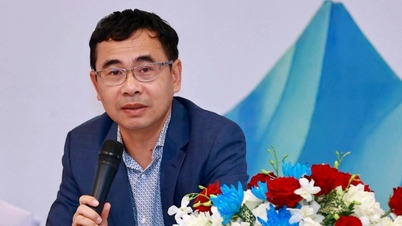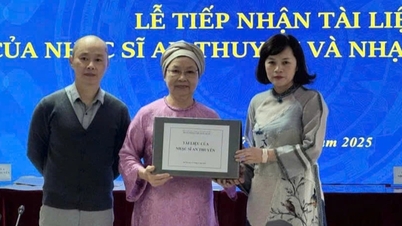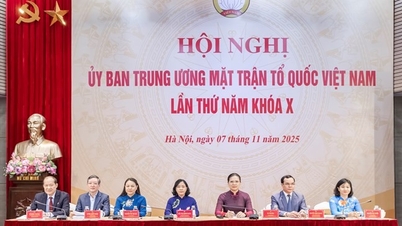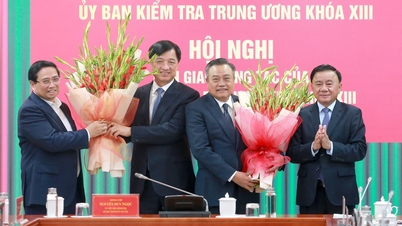In the context of globalization and the 4.0 industrial revolution taking place strongly, higher education becomes the pillar of national competitiveness.
Many countries have boldly implemented programs to restructure their university systems to be streamlined, modernized, and strategically integrated to form centers that lead innovation and knowledge-based economic development.
One of the most effective strategic tools applied by many countries is university merger, aiming to optimize resources and create world- class universities.
Global trend: Merger to become stronger
Since the end of the 20th century, especially after the 2008 global financial crisis, more than 40 countries and territories have implemented university mergers to reduce fragmentation, improve competitiveness and strengthen the international position of education.
According to the OECD report (2018), this trend is considered one of the important ways to help higher education systems adapt to the pressure of globalization, scarcity of public resources and the need to develop interdisciplinary research.

Students consult admission to Thu Dau Mot University (Photo: School Fanpage).
In the UK, in 2004, the Government actively supported the merger of the University of Manchester Institute of Science and Technology (UMIST) and Victoria University to form the University of Manchester. This was a turning point that brought this school into the top 30 universities in the world.
In Finland, Aalto University was born in 2010 from the merger of three major schools of economics, technology and art, creating a rare interdisciplinary model, becoming the locomotive of Nordic innovation.
France is not left out. The University of Paris-Saclay - the result of the merger of major universities under the "alliance - merger by roadmap" model - has risen to the global top 20 after only three years, thanks to the combination of public and private research resources, while strongly attracting technology corporations to invest in the university sector.
In Asia, China is implementing the "Building World-Class Universities" strategy, focusing on merging and investing heavily in key universities such as Peking University, Tsinghua University and Zhejiang University.
South Korea and Japan also carried out extensive reforms, prioritizing the consolidation of public universities to form research centers of global scale.
International experience shows that successful mergers require a combination of four elements: a clear national strategy, a flexible governance model, strong investment resources, and a new post-merger academic identity.
Need to change mindset from "administrative consolidation" to "strategic development"
In Vietnam, the policy of university merger has been clearly institutionalized in Resolution 71-NQ/TW of the Politburo (2025) on breakthroughs in education and training development.
Previously, Decree 125/2024/ND-CP of the Government also stipulated the conditions for merging, consolidating and separating higher education institutions. Decision 452/QD-TTg in 2025 approved the planning of the network of higher education institutions until 2030, with a vision to 2050. These are important legal corridors for implementing a comprehensive restructuring of the higher education system.
Currently, Vietnam has over 250 universities and academies, of which about 140 are public. The public university system is unevenly distributed, with many schools being small in scale and having overlapping majors, leading to resource dispersion.
Some merger models have been implemented, such as Hanoi National University, Ho Chi Minh City National University or Thai Nguyen University. However, these models mainly stop at the administrative level, not creating a real strategic merger model.
The gap between policy and practice is still large, reflected in three points: Lack of unified vision after the merger, fragmented governance model and inadequate financial resources. In addition, local mentality, fear of losing leadership positions and losing individual brands of each school are also significant obstacles.
Vietnam has potential in many directions. National universities, regional universities, and key universities can merge with some small-scale, weak public institutions from localities and ministries to reduce administrative costs and focus on strong institutions.
The system of key pedagogical schools can merge with the group of basic science schools to build a large-scale, high-quality educational university. The group of economic and business administration schools can merge with technical and technological schools to build a multidisciplinary university in the direction of innovation and creativity...
However, for the merger to truly become a breakthrough, it is necessary to change the mindset from “administrative consolidation” to “strategic development”. This requires the State to be both the policy framework creator and strategic investor, while educational institutions must be proactive in their academic vision, cooperation and resource sharing.
This restructuring is not only to save budget, but more importantly to create combined strength to compete internationally.
Mergers must go hand in hand with governance reform and strategic investment.
International experience confirms that mergers only bring real value when associated with governance model reform and strategic financial investment.
The merged schools must have a real autonomy mechanism, along with clear accountability, a streamlined and transparent organizational structure. The University of Manchester and Aalto are typical examples: The centralized, highly autonomous governance model helps them quickly reposition their brands and expand international cooperation.
To do that, Vietnam needs to establish a strategic investment fund for a unified university model, focusing on three priority groups: Upgrading research infrastructure - laboratories, university libraries, digital technology; developing administrative capacity and financial autonomy; internationalizing the teaching staff, expanding cooperation and academic exchange with the world's leading schools.
In addition, there needs to be a mechanism to encourage the private sector, technology enterprises, and investment funds to participate in the process of forming unified universities, especially in the fields of data science, AI, green energy, biotechnology, and cutting-edge medicine.
After the merger, the governance model needs to shift from “loose coupling” to “one university - one strategy”. This means building a governance apparatus with real decision-making power, empowering the president, and applying international accreditation standards to ensure the quality of training and research.
Golden opportunity to act
University mergers are not a "mechanical problem", but a strategic push if implemented with sufficient vision and political determination.
Success will only come when stakeholders such as the State, schools, businesses, and society collectively realize that this is an inevitable process to improve the national university system.
There should be a pilot mechanism for some strategic merger models, from which to summarize and replicate. For example, merging schools in the same field such as engineering, pedagogy, medicine and pharmacy to form strong specialized universities with regional competitiveness.
If implemented properly, the merger could create a historic turning point for Vietnamese education – forming leading research universities, becoming the knowledge center of the Southeast Asian region. And more importantly, it is a necessary step to realize the aspiration to build a prosperous and happy country based on knowledge, creativity and innovation.
The golden moment has come. Today's actions will shape the future of Vietnam's higher education in the country's new era.
Pham Van Thinh
Thu Dau Mot University
Source: https://dantri.com.vn/giao-duc/sap-nhap-dai-hoc-thoi-diem-vang-de-vuon-tam-quoc-te-20251106152635687.htm



![[Photo] Da Nang: Hundreds of people join hands to clean up a vital tourist route after storm No. 13](https://vphoto.vietnam.vn/thumb/1200x675/vietnam/resource/IMAGE/2025/11/07/1762491638903_image-3-1353-jpg.webp)













































































































Comment (0)